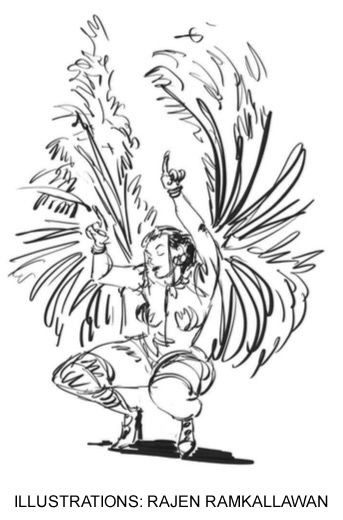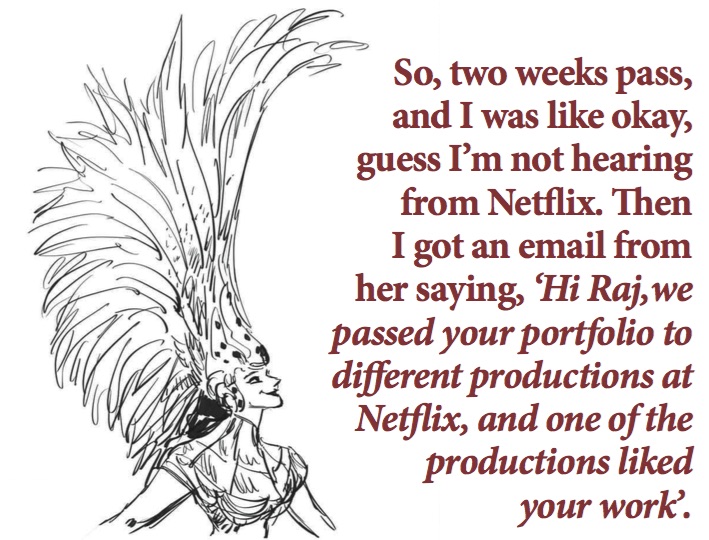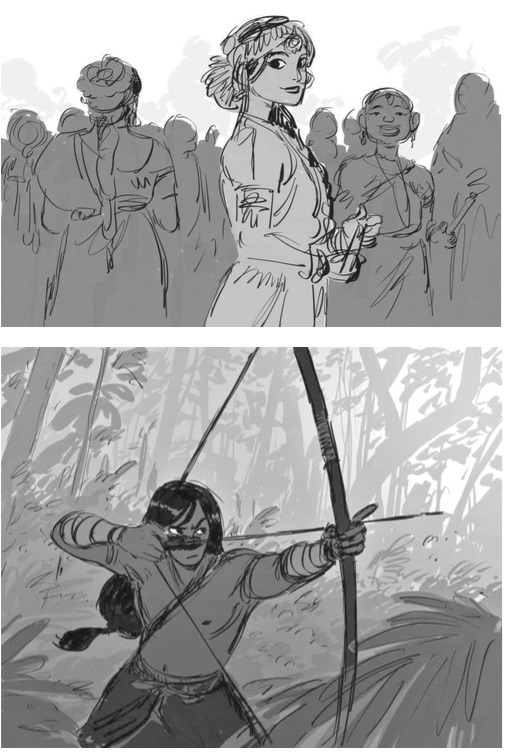
For those of us who grew up in the 1990s, Saturday morning cartoons were a very serious ritual. Heroes and bad guys, action and adventure, and a lot of heart. For Rajendra Ramkallawan, these cartoons, along with the bold and dramatic superhero comic books of the time, sparked a fascination with storytelling and art that would go on to shape his future.
“Ever since then, I never stopped drawing those characters and pop culture,” says Rajen, who was especially partial to Jim Lee’s run of X-men comics. But these days, he has been creating his own worlds and stories, having discovered his love of animation storyboarding.
A graduate of The UWI Visual Arts degree programme at the Department of Creative and Festival Arts (DCFA), Rajen tried out many types of art before deciding which one allowed him to tell the stories he is interested in.

“I did everything there, the modern art, the wire bending, craft and Carnival,” says Rajen, although it was a class with lecturer and Visual Arts Unit coordinator Dr Marsha Pearce that touched on storyboarding and gave him the introduction he needed.
“I think the best experiences I had in the programme came from two lecturers: Steve Ouditt, who taught me in my final year, and Marsha Pierce. Those two lecturers gave me the lessons I could use to build upon in real life.”
After graduating in 2014, the young artist started taking storyboarding seriously:
“After I did a lot of research and found out about the production pipeline for animated films, I realised that I wanted to be a story artist. So I took more classes, I developed a really strong portfolio, and I used to submit to all the studios— got rejected from Disney, Dreamworks, Sundance, Sony Animation, rejection, rejection, rejection.”
But Rajen wasn’t discouraged. He kept working, and gained a readership online with his humorous and relatable comics, one of which would evolve into a series called “The Good Old Days”, a nostalgic recollection of the primary school experiences many of us can relate to, told through the lens of three mischievous and lovable protagonists.
“I decided to do [the “Good Old Days”] comic on just a total whim. I didn’t plan it… I had a memory of primary school, when you were excited to go outside at lunchtime, and you played, then you came in sweaty and your teacher beat you for being sweaty. I just randomly drew it, not naming the characters or anything. And then I realised that people connected with it and I said, ‘I have a lot more of these stories; how about I take the characters a little more seriously’,” says Rajen.

He would eventually draw over 30 stories (200 pages of work), all of which can be read for free on his Instagram page, and has been collected in a book for the hardcore fans.
Meanwhile, the artist’s persistence with his passion for storyboarding was paying off. A friend who was pitching to investors for his own animated TV show idea had passed along Rajen’s portfolio to a Netflix recruiter. There seemed to be interest, so Rajen reached out to the recruiter on Instagram to let her know he was available to work.
“So, two weeks pass, and I was like okay, guess I’m not hearing from Netflix. Then I got an email from her saying, ‘Hi Raj, we passed your portfolio to different productions at Netflix, and one of the productions liked your work’.”

The production in question was an animated feature film depicting the life of Haitian-born rapper and former Fugees leader Wyclef Jean, following his childhood in Haiti and his family’s emigration to Brooklyn, where his music would come to life. Following a stringent screening process, the crew said they wanted Rajen on the team. After signing a contract, he started immediately, and is currently working on sequences. As a storyboard artist, he is expected to produce lots of drawings, and quickly— mapping out the action of the movie with loose, black and white sketches.
“My style of art is more focused on storytelling, so the artwork is pretty sketchy and rough. The acting and the emotions of the characters, their poses, and how they interact with each other. We basically draw out the entire movie first, frame by frame, so we can actually just sit down and look at the movie and break it down.”
For the sequence he has already completed, he was given three weeks to put together 400 drawings. “One panel could be a minute or two minutes,” he says, although the “thinking process” can take a lot longer, depending on the complexity of the shot and how many characters are involved.
The Netflix project now engulfs most of his weekdays, and he hopes to finish up any other work he has outstanding on the weekends so he can take that time to work on his own personal movie idea. Titled “The Great Sun”, it is an epic tale that focuses on the mythology and culture of the indigenous peoples of the Caribbean, and even in the early visual stages it is a sight to behold.
He shares a lot of his artwork on social media, but has also been putting out free online art courses in storyboarding, caricature, character design and gesture drawing.

“Growing up in Trinidad, I couldn’t find the specific type of education I wanted. I wanted to get into real hardcore animation development, and only after UWI I had to go on the internet and look for people working in the industry and pay to learn from them. If I had this knowledge when I was younger, I would have probably reached where I want to go faster... So it was mostly to help people who were in the same situation as me.”
For young artists looking on at Rajen’s success and hoping to find their own, he has this nugget of advice:
“I think being self-aware is one of the most important things, and knowing what type of art you want to pursue in life.”
Instead of trying to mimic someone else’s artistic choices, he recommends really figuring out which art form you are passionate about, and following that.
“If you’re still trying to figure out what type of art you want to do, this is a trick I came up with. Use jealousy to find out which art you like the most. If there are five artists you like, find out which one you’re jealous of the most, and that’s probably the type of art you want to do,” he says with a laugh.
The combination of this passion, hard work and a touch of luck has been his gateway to telling stories to the world.